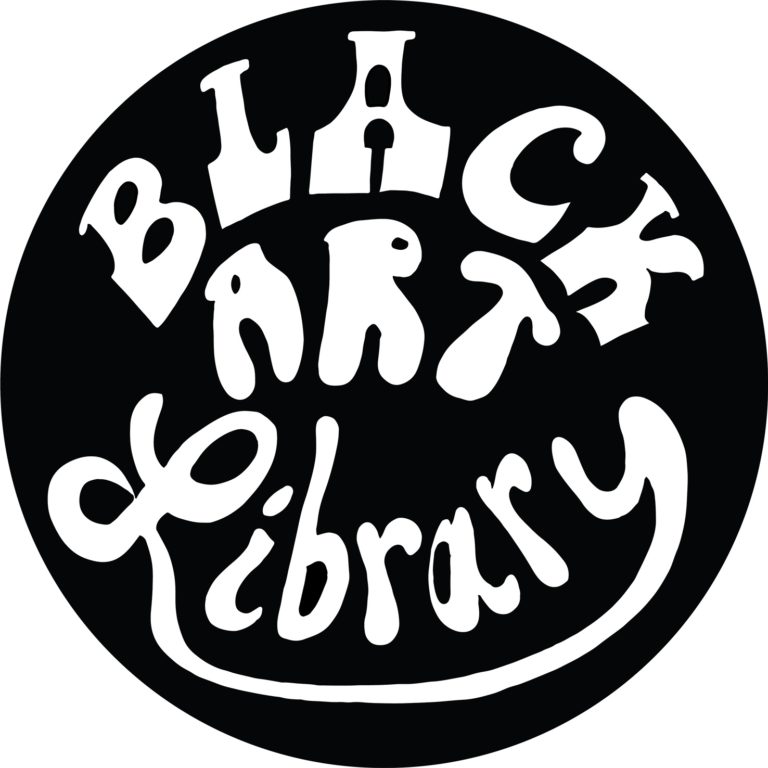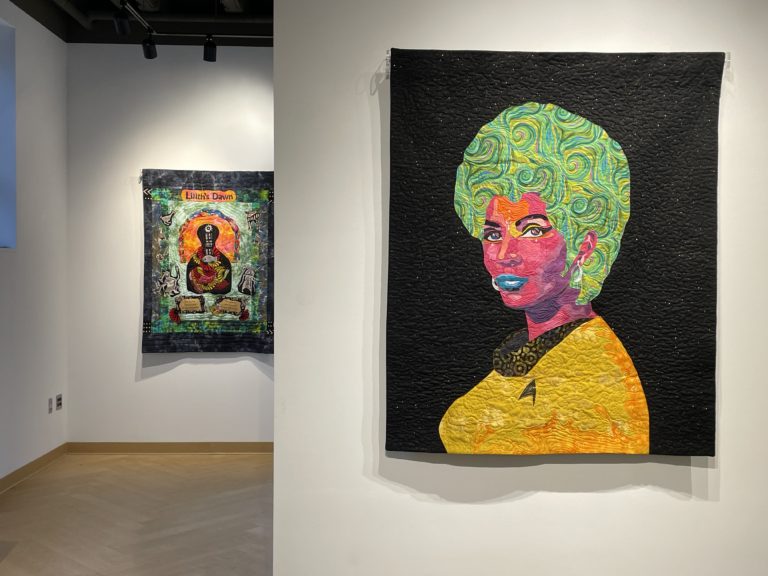An exhibition featuring MSU Artist-in-Residence: Critical Race Studies Qais Assali.
March 15- May 11, 2019
Reception: March 15, 2019 6–8PM
Artist Lecture: March 20, 2019 @MSU Broad Art Museum, 7PM
Please join the MSU Union Art Gallery and the MSU Department of Art, Art History, and Design in celebrating the opening of Costume Party at the Moslem Temple on Friday, March 15 beginning at 6pm, remarks will be offered at 6:30pm. This solo exhibition features the work of MSU Artist-in-Residence: Critical Race Studies Qais Assali.
Assali’s interdisciplinary work stages questions between site and the body in relation to his own identity and locale in order to debunk metaphoric surrounding contested geographies. This exhibition is presented in collaboration with Syrian-American Artists such as: Amanda Assaley, Michael Howard and Reem Taki. Please see below for a complete list of associated programming for this exhibition.
“The lights were off, the doors were open. After their annual Halloween Party, I went in to do research, taking pictures and videos of the Moslem Temple in Southfield, Michigan. The walls of their “Temple” are lined with new and old photographs of old white men wearing fez (dark red hats), men dressed as clowns, men dressed as Cops-and-Robbers, men dressed as Cowboys-and-Indians, men dressed as Arabs. What an endearing boys club. These men fund hospitals and host parties. What could be wrong with that?
In their temple shaped like a tent, in this funhouse of mirrors and American flags, a framed naked Playboy centerfold captures my attention. Their mixing of exotic settings, desert landscapes fashioned with Arabs and camels collide with contemporary American stereotypes and the misrepresentations of women. US nationalistic imagery in the Wild West-themed room conjures up images of settler colonialism gone mad. This mismatched mirage inspires a confusing sense of absurdity found only in a collection of Shriner memorabilia.
The Shriners, formerly known as the Ancient Arabic Order of the Nobles of the Mystic Shrine, a fraternal order organized around the principles of “fun, fellowship and the Masonic principles of brotherly love, relief and truth,” was established in 1870 by founders Walter M. Fleming, M.D., and William J. Florence. Taking many drawings and notes at a party in Cairo, Fleming built his sect of Freemasons, The Shriners, on the pillars of festivities and frivolity. In Arab Middle Eastern history shrines, however, comprise buildings that often house the tombs of prophets, imams and other notable religious figures and have become symbolic spaces for culture, religion, politics, and national identities, due to their sacred and holy status to believers.
Appropriating Arab, Islamic and Middle-Eastern props, characters, images, names, spaces, architecture and tropes for their secret society, rituals and public parades, Shriner parades feature exaggerated and overtly orientalist Arab characters and themes. Steeped in these images for the past year, I wonder: How do the Shriners see the use and consumption of such images of the Arab subject? And more importantly how do these images serve the U.S.’s endless war with and in the Middle East?
As a foreigner, I’m constantly asked to make sense of Palestine for the American or European audience. But as a Middle Eastern, Arab, Muslim artist, am I allowed to play with and to make sense of US-American culture? To show its absurdities back to it? Am I allowed to enter and partake in the house of mirrors, the fun house of clowns, black face and blatant racism toward the Arab world laid bare and unexposed? Can I out this culture? Can I become a Playboy bunny using my circumstance, my labor, and political body to deconstruct the white supremacist, patriarchal American male gaze that looks at me with the same desires to distort and dehumanize my culture for its own pleasures?
In the Shriner’s vision of America, the Arab, Muslim, Middle Eastern body–like so many Arab noses at a party store–is an object to be consumed, costumed, worn, and discarded. How can the Arab/Muslim community of Dearborn persist, resist, and conceal itself right out in the open while the Shriners parade a grotesque Arabesque float just a few kilometers away? This question came to me as I drove the straight line between Dearborn and Southfield, back and forth from the “Temple” to the Mosques. What does it mean to make a work connecting “Moslems” and Muslims? I met with local Arab and Muslim artists from Dearborn’s diaspora of Syrians, Iraqis, Lebanese, and fellow Palestinians to discuss the Shriners and the local communities’ thoughts, interests and concerns.
From Moslem to Muslim. From the Middle East to the Midwest and back again, I asked myself if I was exaggerating or over-sensitive to the offensive images on the walls of this boys’ club. I asked colleagues and friends if I was overreacting or blowing things out of proportion. So I blew up the proportions, scaled up the archive of amassed images and the research into their “temple”. Temples to or for what? I went in to out them. To blast their secrets on a billboard, a float. But failed. The billboard was rejected by the advertising agency. The depressed float can’t protest in the streets and the offensive billboard can’t shout its recriminations.
Making a conversation between old fashioned Orientalism and contemporary Islamophobia, my rejected advertisements can’t echo the muted political potentials of Dearborn, any more than they can represent my own–or anyone’s–struggle for voice. The misrepresentations produced by hyper-capitalism, advertising and mass media, the exports of U.S. culture that I consumed as a Palestinian raised in a state of diaspora in the Arab Gulf, these caricatures, this cast of characters in white America have now become my family in the US. When trying to invoke the spirit or voice of Ginger, an actress who I found in the Playboy archives, I failed, yet again, only to find Penny Gardner, whose story of labor organizing, whose career as faculty in Gender and Women’s Studies at MSU, and whose harrowing stories as a single mother supporting three kids as a Playboy bunny in Baltimore, captured the entire spirit of my project.
What does it mean to have a billboard and a float in one space? How is a float a billboard? What is being advertised in a parade? What does it mean for me to do research in a place called a Moslem Temple and to dance there? How can I or should I become a part of it, to embody it, to use my senses to understand and laugh at this locale? What does the Mystic Order of the Shriners have to do with a Playboy Bunny? What does orientalism have to do with sexism? What does it mean to include other artists in a solo show? What is lost and gained in the American dream for the local Arab artists, artisans and shopkeepers embedded safely within the rich diaspora of their relocated cultures and community here? I have found no answers in my investigation. But while engaging these communities and questions through my practice and time in Lansing, through the making of this show, I have found an endless fountain of knowledge.”
This exhibition was made possible thanks to collaborations with many others. Parade Float was made in collaboration with Syrian-American Artist Amanda Assaley. Mosaic Fountain was made by Syrian-American Artist Michael Howard. O My Lord, Increase me in Knowledge, was painted by Syrian-American Artist Reem Taki.
Costume Party at the Moslem Temple is organized by the MSU Union Art Gallery at Michigan State University. Support for this exhibition and associated programming is provided by the MSU Federal Credit Union, the MSU College of Arts & Letters, MSU Department of Art, Art History, and Design, the MSU Eli & Edythe Broad Art Museum, MSU Museum, MSU Library Digital Scholarship Lab, MSU Library Special Collections, MSU Muslim Studies Program, MSU Students United for Palestinian Rights, University of Michigan Special Collections Research Center, and the Arab American National Museum. Special thanks to Deborah Margolis, Jose Luis Benavides, Sally Howell, Penny Gardner, Becky Gaines, and Michael Dean.

Doubling Displacement
Full list of program of screenings, exhibitions, performances, and talks led by Qais Assali.
Albie Sachs in Palestine
March 18, @Khalil Sakakini Cultural Center, Ramallah, Palestine, 6PM (Palestine time)
Conversation & Screening with activist and former judge on the Constitutional Court of South Africa, led by MSU’s Middle East Studies Librarian Deborah Margolis.
Palestine “With a New”
April 1, Presentation @MSU Library, 4th Floor Green Room, 5PM
April 1, Screening @MSU Library Digital Scholarship Lab, 360 Room, 6PM
Becky Gaines and Michael Dean will talk on the museum’ archives, artifacts, press, stories of New Palestine, Indiana.
Storytelling
April 5 @MSU Broad Art Lab, 4PM
Through storytelling & time-based event, group of students and faculty artists are presenting, screening, and performing on their daily-life performance as artists in the local and global “community”.
Will the Real Moslems Please Bow Down?: Identity Problems in Depression-era Detroit
April 8 @MSU Union, Lake Huron Room, 7PM
Lecture by Dr. Sally Howell, Director of the Center for Arab American Studies and Associate Professor of history at the University of Michigan-Dearborn.
Palestine “With a New” Screening
April 10 @MSU Library Digital Scholarship Lab, 360 Room 5-7PM
Education in the Context of Occupation Panel Discussion
April 12 @303 International Center, 3-5PM
“Education under Siege” conference, organized by MSU Muslim Studies Program
Non-Geographic, Non-Political Dialogue, Pop-up Exhibition
April 19 @MSU Museum, 9AM – 5PM
Pop-up Exhibition for Critical Geopolitics in Collaborative Practices course
Palestine “With a New” Screening
April 22 @MSU Library Digital Scholarship Lab, 360 Room 5-7PM
Non-Geographic, Non-Political Dialogue, Book Launch
May 3 @MSU Union Art Gallery
Book launch for Critical Geopolitics in Collaborative Practices course. Featuring a publication on their collaboration with artist/designers working at MSU and in Palestine.
Palestine “With a New” Screening
May 7 @MSU Library Digital Scholarship Lab, 360 Room 5-7PM
Non-Geographic, Non-Political Dialogue, Exhibition
May 16 @ Arab American National Museum, Dearborn, MI
Qais Assali (b. 1987 Palestine) is currently a Visiting Assistant Professor and Artist-in-Residence at Michigan State University. His works with video, installation, lecture performance, sound, photography, and in the archives seek to engage and subvert national geopolitical power dynamics. His interdisciplinary work stages questions between site and the body in relation to his own identity and locale in order to debunk metaphoric surrounding contested geographies.
Assali’s work has been internationally exhibited at Jeune création, Paris (2016); 6018North, Chicago (2018); Festival Artes Vertentes de Tiradentes, Brazil (2016); The Overlook Place, Chicago (2018); solo exhibitions at Akademirommet, Kunstnernes Hus, Oslo (2015); and Khan Al Wakala, Nablus (2016). Assali has been a faculty member at a number of academic institutions in Palestine including Al-Ummah College, Jerusalem, Palestine. Assali holds two master’s degrees – an MA in Art Education from the School of the Art Institute of Chicago and MFA from Bard College Milton Avery Graduate School.


